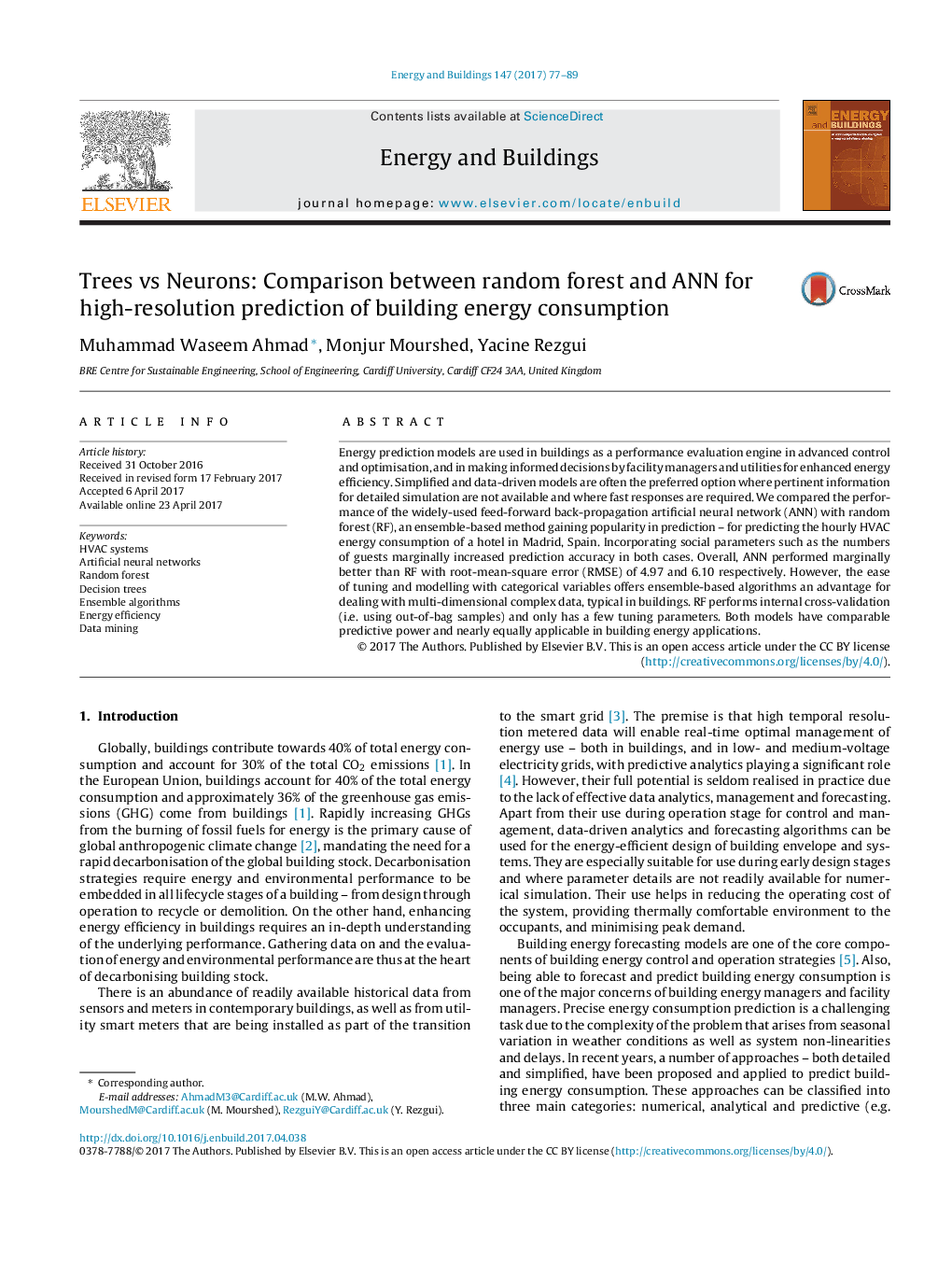| کد مقاله | کد نشریه | سال انتشار | مقاله انگلیسی | نسخه تمام متن |
|---|---|---|---|---|
| 4919149 | 1428943 | 2017 | 13 صفحه PDF | دانلود رایگان |

- Developed machine learning models for HVAC electricity consumption prediction.
- Compared the performance of feed-forward back-propagation artificial neural network (ANN) with random forest (RF).
- The ANN model performed marginally better than the RF model.
- RF model can be used as a variable selection tool.
Energy prediction models are used in buildings as a performance evaluation engine in advanced control and optimisation, and in making informed decisions by facility managers and utilities for enhanced energy efficiency. Simplified and data-driven models are often the preferred option where pertinent information for detailed simulation are not available and where fast responses are required. We compared the performance of the widely-used feed-forward back-propagation artificial neural network (ANN) with random forest (RF), an ensemble-based method gaining popularity in prediction - for predicting the hourly HVAC energy consumption of a hotel in Madrid, Spain. Incorporating social parameters such as the numbers of guests marginally increased prediction accuracy in both cases. Overall, ANN performed marginally better than RF with root-mean-square error (RMSE) of 4.97 and 6.10 respectively. However, the ease of tuning and modelling with categorical variables offers ensemble-based algorithms an advantage for dealing with multi-dimensional complex data, typical in buildings. RF performs internal cross-validation (i.e. using out-of-bag samples) and only has a few tuning parameters. Both models have comparable predictive power and nearly equally applicable in building energy applications.
Journal: Energy and Buildings - Volume 147, 15 July 2017, Pages 77-89